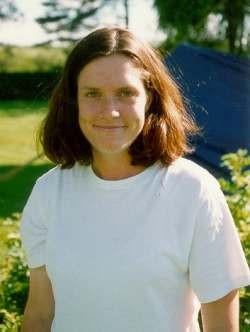Erika Vye

B. Sc. Honours Thesis
Benthic foraminifera under fish farming operations in the Bras d'Or Lakes; Implications for aquaculture feasibility in Nova Scotia
(PDF - Mb)
The feasibility of aquaculture operations in Nova Scotia is an issue of concern as the number of new farms steadily increases. With the threat of detrimental effects to the environment it is important that sites are monitored at all stages of development. Benthic foraminifera are an excellent tool for monitoring slight changes in environmental conditions. This thesis uses benthic foraminifera to analyze three cores from the Bras d'Or Lake to determine what effects, if any, aquaculture has had on these areas.
Two cores were collected from the Seal Island fish farm located in the Great Bras d'Or Channel. Core 1 was collected from directly beneath the fish farm, Core 2 was collected 35m away from the cage. An additional core was collected from Whycocomagh Bay 100m from a former aquaculture site. Cores were examined for foraminiferal assemblages in order to detect the possibility of adverse effects associated with the aquaculture sites.
The results indicate no detectable adverse effects on the substrate with respect to benthic foraminifera A seasonal variation in foraminiferal abundance from Seal Island Core 1 is correlated with a high sedimentation rate from the fish farm in the summer months.
Although the results from this study are positive it is essential to constantly monitor aquaculture sites in order to detect adverse effects early. It is necessary to incorporate all scientific fields in this assessment. A multidisciplinary approach to the study of aquaculture is therefore recommended.
Keywords: aquaculture, benthic foraminifera, Bras d'Or Lake, Seal Island, Whycocomagh Bay, Nova Scotia, environment
Pages:
Supervisor: David Scott



